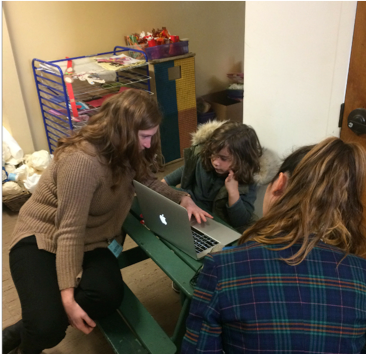Principal Investigator: Nina Hyams, Victoria Mateu
Department of Linguistics
howalpert@g.ucla.edu
Participants: Rooms 14, 15 & 16 – Students ages 4-6
Keywords: Language Acquisition, Contextual reading comprehension
This study researchers will investigate children’s understanding of ellipsis and relative clauses. Ellipsis refers to the omission of part of a sentence that are understood through linguistic context, e.g. previous sentence. For example, the elided portion of sentence (1a) is interpreted as the string in angle brackets in (1b)
Studies show that children under the age of 6 have greater difficulty comprehending sentences that question objects (e.g. Who did Mary call ____?) than those that question subjects (e.g. Who ____ called Mary?). In this study the team investigated the acquisition of two constructions that involve subject/object gaps—“wh” questions that contain elided material, a.k.a. sluiced questions (e.g. Someone called Mary, do you know who?) as well as relative clauses (e.g. I know the man that _____ called Mary. The researchers aim to investigate two key questions. (i) will children show a correlation in performance between these two constructions?—evidence for theoretical analyses that relate the two constructions in linguistics/mental presentations, and (ii) does children’s better performance with subject-related constructions arise from the shorter distance between the moved element and where it was originated (indicated with the underscore above), or due to the connection children make between subjects and animate agents? (i.e if who-question choose the animate subject, if what question choose the inanimate object.
